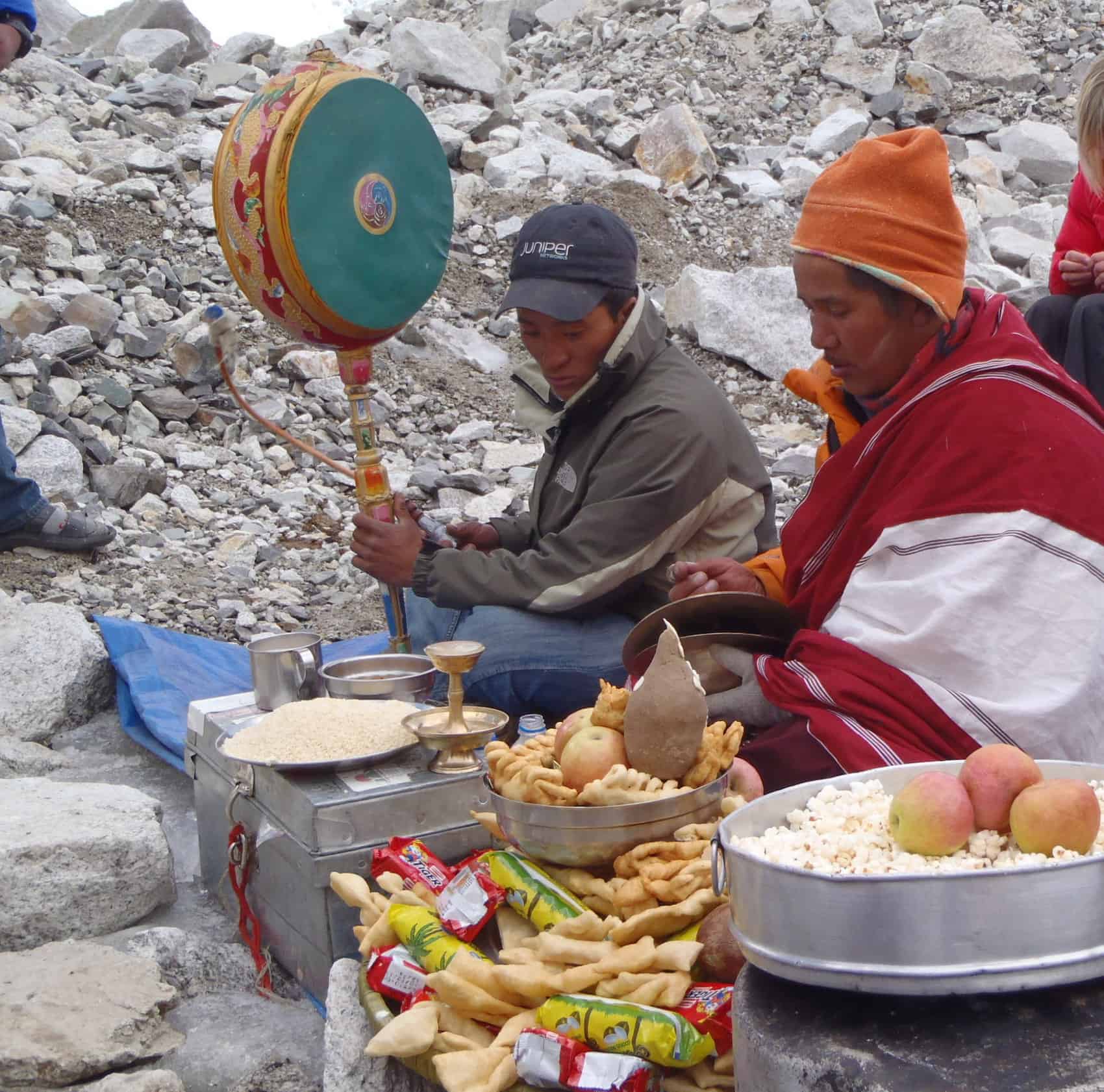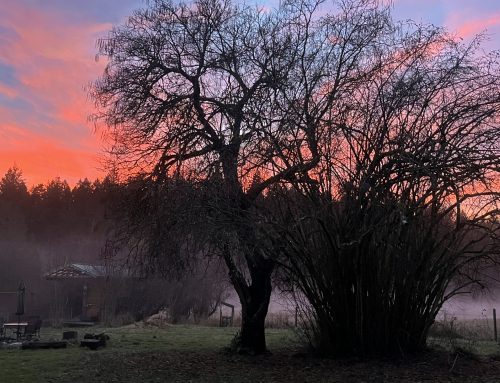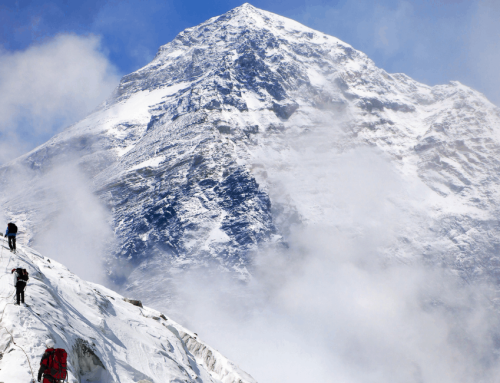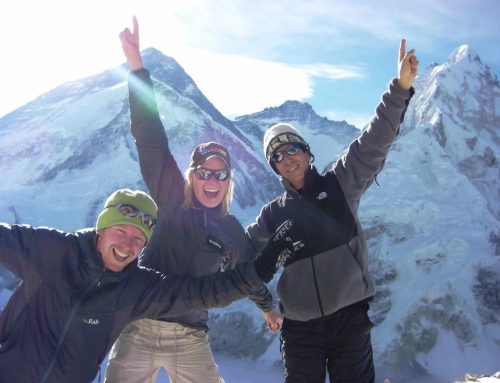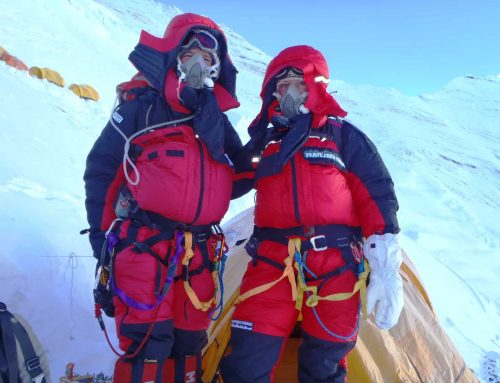Om Mane Padme Hum – On the Kathmandu and Everest Tragedies
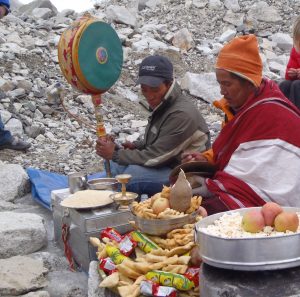
The story and pictures and videos are devastating to watch. The earthquake in Nepal and the avalanches triggered around Mount Everest have killed more than 4,000 as of this writing and at least 17 climbers on Everest. One can’t help but be moved beyond belief on the catastrophe that has wrecked so much of the city and country and so many ancient temples.
One of the stories I read was on CNN.com which talked about the mindset of the country’s Hindus and Buddhists as they were preparing funeral pyres for the dead. It says, and quoting Todd Lewis, “an expert on Asian religious at College of the Holy Cross in Massachusetts”:
… unlike Abrahamic traditions, in which a single God is thought to be omniscient and all-powerful — and thus, in theory, responsible for allowing natural disasters — Buddhists and Hindus have another way of looking at tragic events, Lewis explained.
Some place the blame at the feet of karma — human actions that result in future consequences. But many others just see earthquakes and tsunamis as amoral events, neither caused by angry deities nor visited on deserving sinners.
“Buddhist and Hindu texts make it clear that there are all kinds of causal contingencies that just happen,” with no cosmic rhyme or reason, Lewis said. In one famous Buddhist book, “The Questions of King Milinda,” the Buddha teaches that the majority of things that happen to people, good or bad, are not related to karma at all. To put it very simply: Stuff happens.
This is very hard to comprehend when one thinks that there has to be reason that this happened beyond the tectonic shifting of plates beneath the very mountains that it formed – the Himalayas. The earthquake and avalanche happened at the worst possible time, when Everest Base Camp was filled with climbers, porters, sherpas and visitors from so many countries and just days after the ‘puja’ – prayer ceremonies on the mountain after which climbers can start ascending through the Khumbu Icefall towards an eventual summit attempt.
The article goes on to say:
… a number of followers of Tibetan Buddhism are sending aid and prayers to several monasteries from that tradition in Nepal. One phrase comes up again and again: Om mane padme hum, which can be translated several ways, most commonly as “jewel in the lotus.”
Known as the “heart mantra,” the phrase invokes Avalokiteshvara, the Buddhist bodhisattva of compassion. (Bodhisattvas are enlightened beings who forgo nirvana in order to help others.) When the mantra is chanted, Buddhists, particularly in Nepal, believe Avalokiteshvara appears and helps people in need, Lewis explained. The earthquake struck as Nepal was holding a centuries-old ceremony dedicated to Avalokiteshvara, the scholar said.
Now, instead of wheeling around the bodhisattva’s chariot, Nepalese victims are building funeral pyres to burn their dead. The practice may seem strange, even gruesome to Westerners, who dress their dead in fine clothing and bury them in boxes.
But in Nepal, a country with no graveyards, Lewis said funeral pyres are seen as the most compassionate way to treat the dead, for both Hindus and Buddhists believe in reincarnation, that we cycle through not one life but many. When we die, our corpses may lie lifeless but our spirit — Hindus call it a soul; Buddhists call it consciousness — lives on, and looks for another body to inhabit.
If the corpse is not destroyed quickly after death, the soul lingers and get trapped between realms, forced to wander Earth as an agitated ghost. When the skull bursts open on the funeral pyre, that means the soul has left the body, Lewis said. The ashes are then tossed in the Bagmati River, holy to Hindus and Buddhists, and born downstream.
“The body is gone … but the soul will be alive.”
All along the way to base camp are prayer wheels, prayer flags, monuments and om mane padme hum (in Nepalese) carved into stone. We spun the prayer wheels each and every time we came upon them.
On our own expedition to Everest, on the trek in to base camp, we made our way above a village to the home of the local senior lama. There, in a great wood-paneled room, we assembled ourselves for prayers, blessings, and tea—something climbers and Sherpas have been doing for generations. The lama, a white-haired man in his eighties, wore a red robe and a radiant smile. He stood facing us from behind a wooden table on which rested a large bowl of rice and a vase of ostrich feathers. Behind him stretched a long wall of photographs of climbers who had gone before us. Some of these men and women had summited, some had turned back early, and some were still on the mountain in their frozen graves.
The lama prayed for our safe return, as he and those before him had prayed for the safe return of countless other climbers, eventually sending us on our way with little envelopes of the blessed rice and a small symbolic prayer necklace and prayer scarf (khata). I was moved to tears by the ceremony and the many years of hope and angst it represented to the climbers, guides, sherpas, and locals who were present.
I can only imagine the climbers and sherpas who had visited this very place in the last few weeks, and like myself, had viewed their own mortality and took stock of the lives they had led and the dangers that were ahead.
At this time, we can send prayers for their souls and all the people of Nepal, India, China and foreigners that lost their lives.
If you want to give – do so in any number of ways: to a reputable charitable organization (Red Cross e.g.), from your heart with a prayer, or to a local group that helps people live better lives


